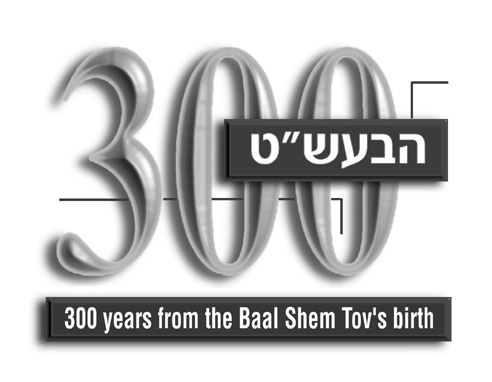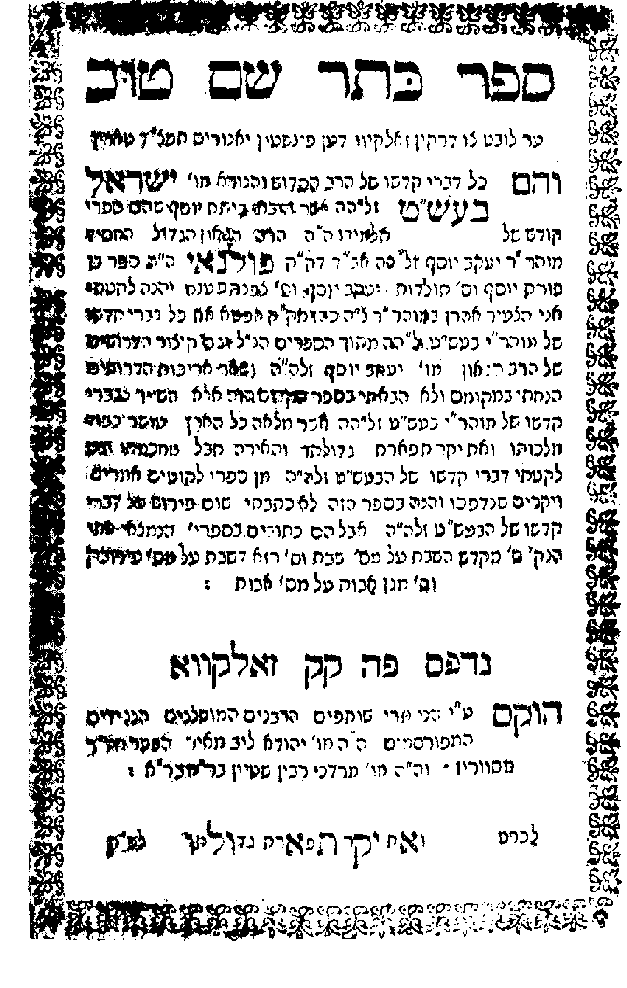HAPPY BIRTHDAY BAAL SHEM TOV
Courtesy: Tzvi Freeman
On the 18th of Elul 5757 (Sept. 20 1997), we entered the 300th year of the Baal Shem Tov. (The Baal Shem Tov's passing was on Shavuos)
If that doesn't impress you, take the following into account. There are just too many "fifties" to ignore:
The Baal Shem Tov was born in the year 5458. Fifty years earlier was a major date on the Jewish calendar for two reasons: The classic work "Shnei Luchos Habris" (usually referred to as the "SheLoH") was published. It became the most influential book in Jewish thought over the next hundred years of more, and served as a basis for chassidic philosophy.
The other event was the catastrophe of the Chielminicki Cossack rebellion, which devastated the Jewish settlements of the Ukraine and Poland. The hardships and social upheaval that were incurred by this disaster set the stage for the need and the success of the Chassidic Movement.
Interestingly enough, in the year the Baal Shem Tov was born, a new printing of the Sheloh was published, this time in clear, large type.
Approximately fifty years after the birth of the Baal Shem Tov, in the year 5507 -- according to a letter he wrote to his brother- in-law -- on the awesome day of Rosh Hashana, the Baal Shem Tov ascended to the supernal chamber of the Moshiach. He asked the Moshiach, "When, master, will you come?" The reply: "When your wellsprings will spread to the outside."
 |
 |
Apparently, the Baal Shem Tov felt the time was ripe right then, in that year. But there was still work left to do. And the worked continued to progress in fifty year cycles.
About fifty years later, in the year 5557, the first comprehensive and practical guide to the teachings of the Baal Shem Tov was published. Finally, the teachings that had been the property of a select few, only trickling down to the masses in the form of tidbits and tales, was accessible to anybody who was capable of learning Torah, or who had a teacher to guide him. The guide was the "Likutei Amarim" of Rabbi Schneur Zalman of Liadi, the book we now call the "Tanya".
In the Jewish world, a written Torah needs an oral tradition to make it complete. Only then, can it be said that living wellsprings are truly "spread to the outside". And so, about fifty years later, the year 5608, the grandson of the author of the Tanya, Rabbi Menachem Mendel of Lubavitch, published his grandfathers "oral Torah" -- a collection of explanations and illuminations of chassidic thought in great detail. He called it "Likutei Torah".
 |
By the way, that year -- 1848 -- also occupies a central place in the secular calendar. It was called the "year of revolutions" in Europe, the most significant year in the fall of the old order. And another major work by a very different Jewish author was published: The Communist Manifesto of Karl Marx. That year, 5608, had been predicted to be a year of liberation and the end of the Jewish exile by several tzaddikim. At its close, Rabbi Menachem Mendel's youngest son and heir asked him what had happened, where was the redemption? His father replied, "Didn't I publish the Likutei Torah?" Apparently, another major step had been made. But it still was not enough. And so, about fifty years later, in the year 5657, on the birthday of the Baal Shem Tov, the grandson of Rabbi Menachem Mendel announced a radical move. Until now, chassidic thought was something studied in depth whenever time could be taken from the study of Talmud.It was spice to the broth, dessert for special occasions. Now it would become part of the main course. Rabbi Sholom Dov Ber of Lubavitch opened the first yeshiva where study of chassidus was a fixed part of the curriculum. |
Now adolescents would enter the deepest mysteries of the universe with the same approach as Talmud and Gemora. The wellsprings had come out of the bowels of the earth, sprung above, and were now spreading far beyond their original place.
Fifty years later was 1948. We all know what happened then. Or do we?
In the years before 1948, Rabbi Sholom Dov Ber's son, Rabbi Yosef Yitzchaak of Lubavitch replanted the wellspring-yeshiva his father had founded far from its roots in the New World. With all the resources he had available to him, he did whatever he could to announce to the entire Jewish world, "L'alter l'teshuva, l'alter l'geula" -- "Immediate return to our heritage will mean immediate redemption of our people". Shortly after, the state of Israel was established. But the exile of the Jewish soul remained.
Fifty years later is now!